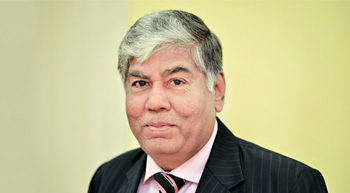Vijay G Kalantri, Chairman & Managing Director, Dighi Port Ltd & Balaji Infra Projects Ltd, shares his expansion plans and comments on Make in India, the PPP model and much more.
What are the reasons for the diversion of cargo from the major ports to the non-major ports?
As a result of the capacity constraints being faced by the major ports, cargo is diverted to the private ports due to locational advantages, high operating efficiency, superior cargo handling equipment and investment in large capacity creation. Further, the EXIM trade is looking for ports that offer better infrastructure as well as high levels of operational efficiency. Newer ports are now offering deeper drafts so as to accommodate new generation of vessels, which in turn provide the shippers with economies of scale.
Liberalising TAMP will ensure that major ports will have the same level playing field as minor ports as far as tariff fixations are concerned.
What is your current capacity and what are your expansion plans?
We have an installed capacity of 15-18 million tonne. Within a year, we will complete two more berths and our installed capacity will go up to 30 million tonne. We have applied for seven more berths which will increase the capacity to 70-80 million tonne. Financial constraints are there. Rail-road connectivity has prevented the optimum utilisation of the installed capacity. These issues are being addressed.
What about the financial restructuring to recast 800 crore of loans?
Recast is important because 14 per cent is too high an interest for any infrastructure project. We intend to recast with foreign loans or a strategic investor who can fund money without interest.
Could you throw some light on the MoU signed with IL&FS and the one with Rail Vikas Nigam Ltd?
IL&FS is a 27 per cent stake holder in our company. But it is a financier. We want to have some strategic investor from the shipping or maritime sector who can help boost the capacity of the port. The rail project will take off fast. Even Maharashtra government has taken 11 per cent equity in this.
Will Delhi Mumbai Industrial Corridor resolve the issue of connectivity?
Dighi port is the final node of Delhi Mumbai Industrial Corridor (DMIC), which is being developed jointly by the Indian and the Japanese Government and is now taking shape. So, we feel our connectivity issues will be addressed very soon.
How far will ´Make in India´ drive the sector´s growth?
Once manufacturing sector grows, import-export trade will grow, which will help the growth of ports. The prime minister has been talking about port-led growth. Today, the ports sector is congested. If we are talking about 8-10 per cent growth, then around 20 ports need to come up and there has to be capacity enhancement.
Has the public private partnership model fared well in the ports sector?
The progress of PPP projects in India´s port sector has been slower than expected due to various policy-related impediments at the pre and post-award stages. Deregulation of Tariff Authority for Major Ports (TAMP) and abolition of service tax are necessary.



Leave a Reply
You must be logged in to post a comment.